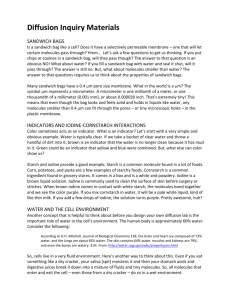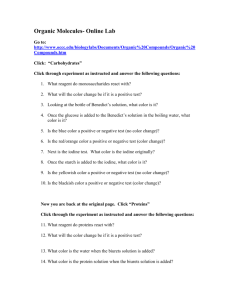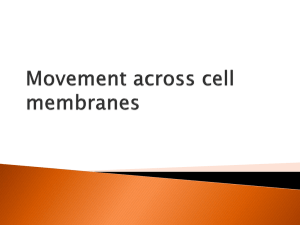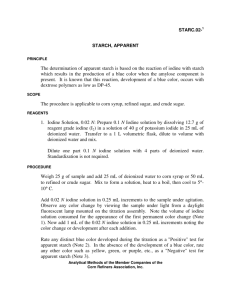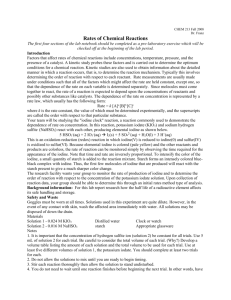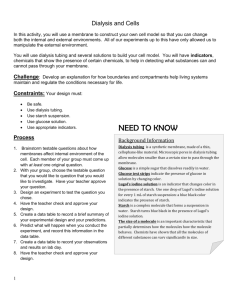3. Sizes
advertisement
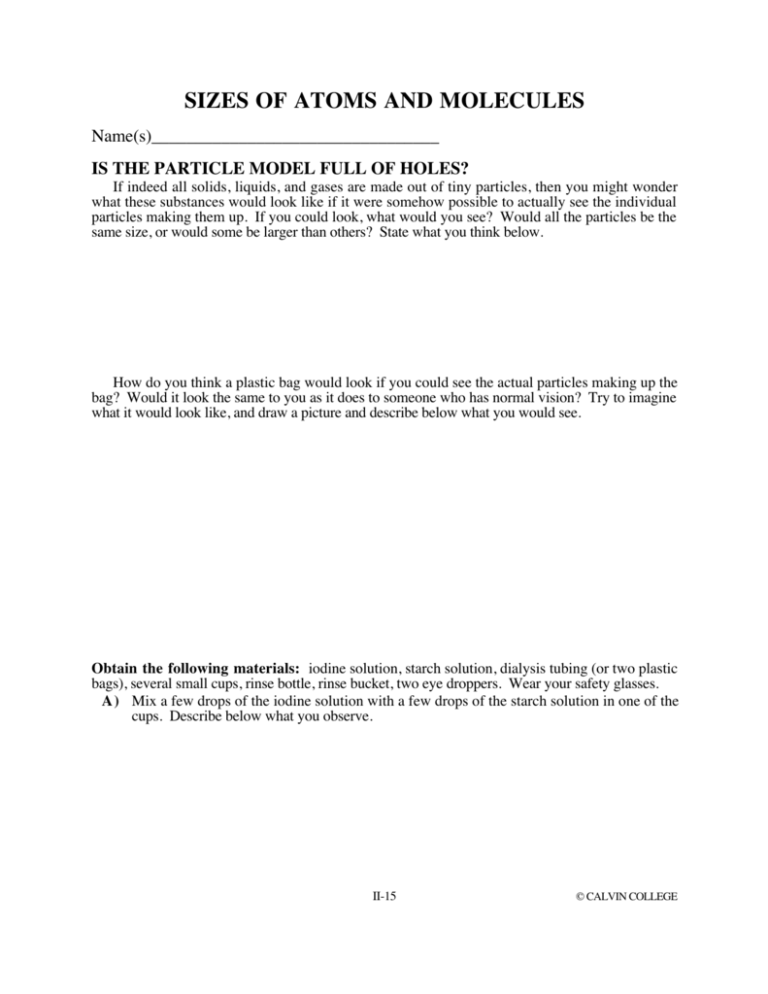
SIZES OF ATOMS AND MOLECULES Name(s)_________________________________ IS THE PARTICLE MODEL FULL OF HOLES? If indeed all solids, liquids, and gases are made out of tiny particles, then you might wonder what these substances would look like if it were somehow possible to actually see the individual particles making them up. If you could look, what would you see? Would all the particles be the same size, or would some be larger than others? State what you think below. How do you think a plastic bag would look if you could see the actual particles making up the bag? Would it look the same to you as it does to someone who has normal vision? Try to imagine what it would look like, and draw a picture and describe below what you would see. Obtain the following materials: iodine solution, starch solution, dialysis tubing (or two plastic bags), several small cups, rinse bottle, rinse bucket, two eye droppers. Wear your safety glasses. A ) Mix a few drops of the iodine solution with a few drops of the starch solution in one of the cups. Describe below what you observe. II-15 © CALVIN COLLEGE 2 - 3 SIZES OF ATOMS AND MOLECULES When the starch and iodine come into contact a chemical reaction occurs. (A chemical reaction also occurs when vinegar is poured onto baking soda.) A chemical reaction is said to have occurred when two or more atoms join together to form a new molecule. A chemical reaction is also said to have occurred if a molecule breaks up into smaller molecules or into individual atoms. 1. What change did you observe when you combined iodine and starch which might have alerted you to the fact that a chemical change had occurred? 2. What other changes do you think one might observe during a chemical reaction? (List at least three.) B) Fill one cup about 2/3 full of iodine solution. Fill a second cup about 2/3 full of starch solution. C ) Cut a piece of dialysis tubing to about 5 inches long. Tie a knot in one end of the tube. Fill the tube about 2/3 full with iodine solution and then tie off the other end of the tube. You should now have a completely sealed bag of iodine solution. (Note: if you have trouble opening up the dialysis tubing, try soaking the tubing in water for a few minutes first.) D ) Rinse your bag with the rinse water into the rinse bucket so that there is no iodine solution left on the outside of the bag. When the outside of the bag is clean, you should place the bag into the cup containing the starch solution. E) Repeat parts C) and D), only this time fill a tube with starch solution and place it in the cup containing iodine. 000000 111111 111 000 0 1 111111 000000 111 000 111111 000000 111 000 111111 000000 111 1 000 0 1 0 111111 000000 000000 111111 111 000 00 11 111111 000000 111 000 111111 000000 111 000 111111 000000 111 1 000 0 01 111111 000000 starch iodine iodine UNIT 2 PARTICULATE NATURE OF MATTER II-16 starch © CALVIN COLLEGE 2 - 3 SIZES OF ATOMS AND MOLECULES F) While you are waiting for something to happen, consider the following question: Think about what might happen if you began throwing golf balls and basketballs at a chain link fence. Which balls might go through the fence? RESULTS G) After you have waited for a few minutes, inspect your solutions. 1. Have the starch and iodine begun to react? How do you know? 2. Label the drawings below according to the colors you observe in the cups. starch iodine starch iodine 3. Look at your response to part F) above, and then give an explanation for how the two solutions in this activity may have come in contact. 4. Which molecules do you think are larger, iodine or starch? UNIT 2 PARTICULATE NATURE OF MATTER II-17 © CALVIN COLLEGE 2 - 3 SIZES OF ATOMS AND MOLECULES 5. The molecules of iodine in these solutions are typically made up of just one, two, or three iodine atoms. The starch molecules are typically made up of hundreds or thousands of carbon, hydrogen, and oxygen atoms all bound together. Do these facts seem consistent with your observations? H) In the space below, sketch a magnified view of a portion of the tubing used in this investigation. Include also some starch and iodine molecules on either side of the tubing. Describe in words what is happening. UNIT 2 PARTICULATE NATURE OF MATTER II-18 © CALVIN COLLEGE



